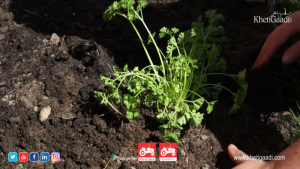Citrus Fruits and Vegetables in India
Citrus fruits and vegetables play a vibrant and essential role in the Indian diet, contributing to both health and economy. With their unique flavors, refreshing taste, and numerous health benefits, citrus produce is widely consumed and cultivated across the country. From providing immunity-boosting nutrients to supporting agricultural livelihoods, citrus fruits and vegetables are not just a part of Indian cuisine but also a critical component of nutritional and economic wellbeing.
What Are Citrus Fruits and Vegetables?
Citrus fruits and vegetables are primarily recognized for their acidic content, refreshing flavour, and high levels of vitamin C. They belong to the Rutaceae family, primarily thriving in warm, tropical climates. These plants produce fruits and vegetables that contain citric acid, contributing to their tart and slightly sour taste. Citrus plants are native to South and Southeast Asia, but their cultivation has spread globally.
List of Citrus Fruits and Vegetables in India
India produces a wide variety of citrus fruits and vegetables, each offering distinct Flavours and health benefits. Below is a comprehensive list of commonly grown citrus produce in India:
Citrus Fruits
- Oranges: Grown in Maharashtra, Madhya Pradesh, and parts of North-East India.
- Lemons: Predominantly cultivated in Andhra Pradesh, Maharashtra, and Gujarat.
- Limes: Found across India, particularly in tropical and subtropical regions.
- Grapefruits: Cultivated in Andhra Pradesh and Assam.
- Pomelo (Chakotra): Grown in Assam, Uttar Pradesh, and the Western Ghats.
- Mandarins (Kinnow): Common in Punjab, Himachal Pradesh, and Rajasthan.
Citrus Vegetables
While citrus vegetables are less common, certain vegetables such as tamarind and kaffir lime leaves offer tangy flavours similar to citrus. Tamarind is particularly famous in South Indian dishes for its citrusy tang.
Importance of Citrus Fruits and Vegetables in India
- Nutritional Value: Citrus fruits are rich in vitamins, particularly vitamin C, which plays an essential role in immunity. Additionally, they contain antioxidants and dietary fiber that promote health and wellness.
- Economic Impact: The citrus industry is a significant contributor to India’s agricultural economy, creating jobs, supporting small farmers, and increasing export revenue. Citrus fruits are also crucial for industries producing juice, essential oils, and other food products.
- Traditional Medicine: Citrus has been an integral part of Ayurvedic and traditional Indian medicine, used for its therapeutic properties to treat various ailments like digestive issues, skin conditions, and respiratory problems.
- Environmental Impact: Citrus farming supports biodiversity by providing habitats for bees and other pollinators. Sustainable farming practices in citrus cultivation also promote soil health and reduce greenhouse gases.
Benefits of Citrus Fruits and Vegetables
Citrus fruits and vegetables have several scientifically backed health benefits. Here are some key advantages:
1. Boosting Immunity
Citrus fruits are rich in Vitamin C, a vital nutrient that helps strengthen the immune system, enabling the body to combat infections and illnesses. Regular consumption of citrus can help reduce the risk of colds, flu, and other immune-related ailments.
2. Supporting Heart Health
Citrus fruits are known for their antioxidant properties, which help in reducing inflammation and preventing heart disease. Studies have shown that people who consume citrus regularly have lower cholesterol levels, reduced blood pressure, and better cardiovascular health.
3. Improving Skin Health
Rich in antioxidants and vitamin C, citrus fruits like oranges and lemons are natural skin enhancers. They combat free radicals that cause skin aging, reduce acne, and improve overall skin elasticity and brightness.
4. Aiding Digestion
Citrus fruits, especially lemons and oranges, are high in fiber and natural acids that aid digestion. They can relieve constipation, promote gut health, and support the digestive process.
5. Weight Management
Low in calories but high in fiber, citrus fruits make an excellent addition to weight management diets. They help increase satiety, preventing overeating, and supporting weight loss efforts.
6. Reducing Cancer Risk
Certain compounds in citrus fruits, such as flavonoids and limonoids, have shown cancer-preventing properties. Regular consumption of citrus fruits has been linked to a reduced risk of various cancers, including esophageal, stomach, and lung cancer.
Success Stories in Citrus Farming in India
1. Nagpur Orange Farmers’ Collective
In the Nagpur region, often called the “Orange City” of India, a group of small-scale farmers united to create a citrus farming cooperative. By leveraging government support and subsidies for citrus cultivation, they have improved their yield, introduced sustainable farming practices, and increased their profit margins. The Nagpur Orange Farmers’ Collective is now a symbol of community-driven success in Maharashtra.
2. Lemon Farming in Andhra Pradesh
In the southern state of Andhra Pradesh, a farmer named Subramaniam turned his small family farm into a highly profitable lemon-producing operation. Using innovative irrigation techniques and organic farming practices, he managed to increase his yield threefold, positioning his farm as a case study for sustainable and profitable citrus farming in the region.
3. Kinnow Cultivation in Punjab
The Kinnow variety, a hybrid mandarin type, has seen great success in Punjab. A farmer cooperative here has not only achieved high productivity but also exports Kinnow to countries in the Middle East, boosting their incomes. With government support and collaborative strategies, this initiative has brought economic stability to many local farmers.
Government Support and Schemes for Citrus Cultivation
The Indian government has introduced various schemes to promote and support citrus farming. For example:
- National Horticulture Mission (NHM): This scheme provides financial support to farmers for establishing new orchards, covering infrastructure costs, and adopting modern techniques.
- Mission for Integrated Development of Horticulture (MIDH): MIDH offers assistance for the development of post-harvest infrastructure and training farmers in best practices.
- Sub-Mission on Agricultural Mechanization (SMAM): Aimed at increasing productivity, SMAM provides subsidies for farm machinery and equipment essential for citrus farming.
For more information, visit the National Horticulture Mission and the Mission for Integrated Development of Horticulture.
Conclusion
Citrus fruits and vegetables, with their incredible health benefits and economic significance, continue to shape the landscape of Indian agriculture. Through successful initiatives and government support, farmers across India are finding ways to make citrus cultivation a sustainable and profitable enterprise, providing both nutrition and livelihoods to the country’s population.
Reference Links
Tags




